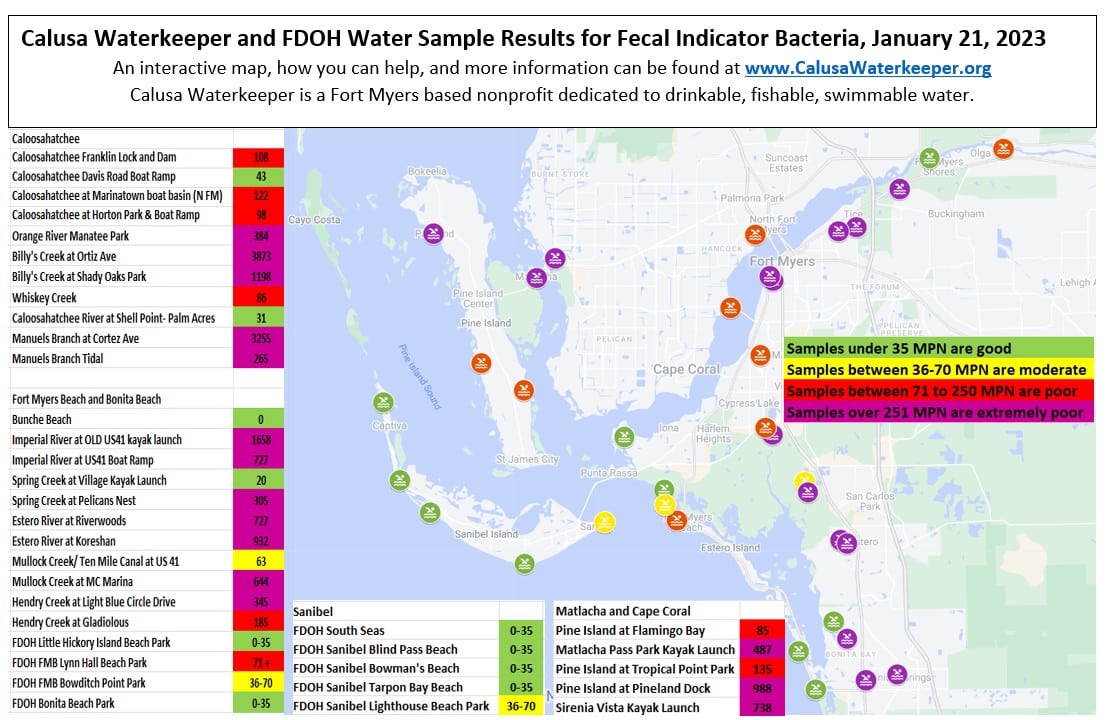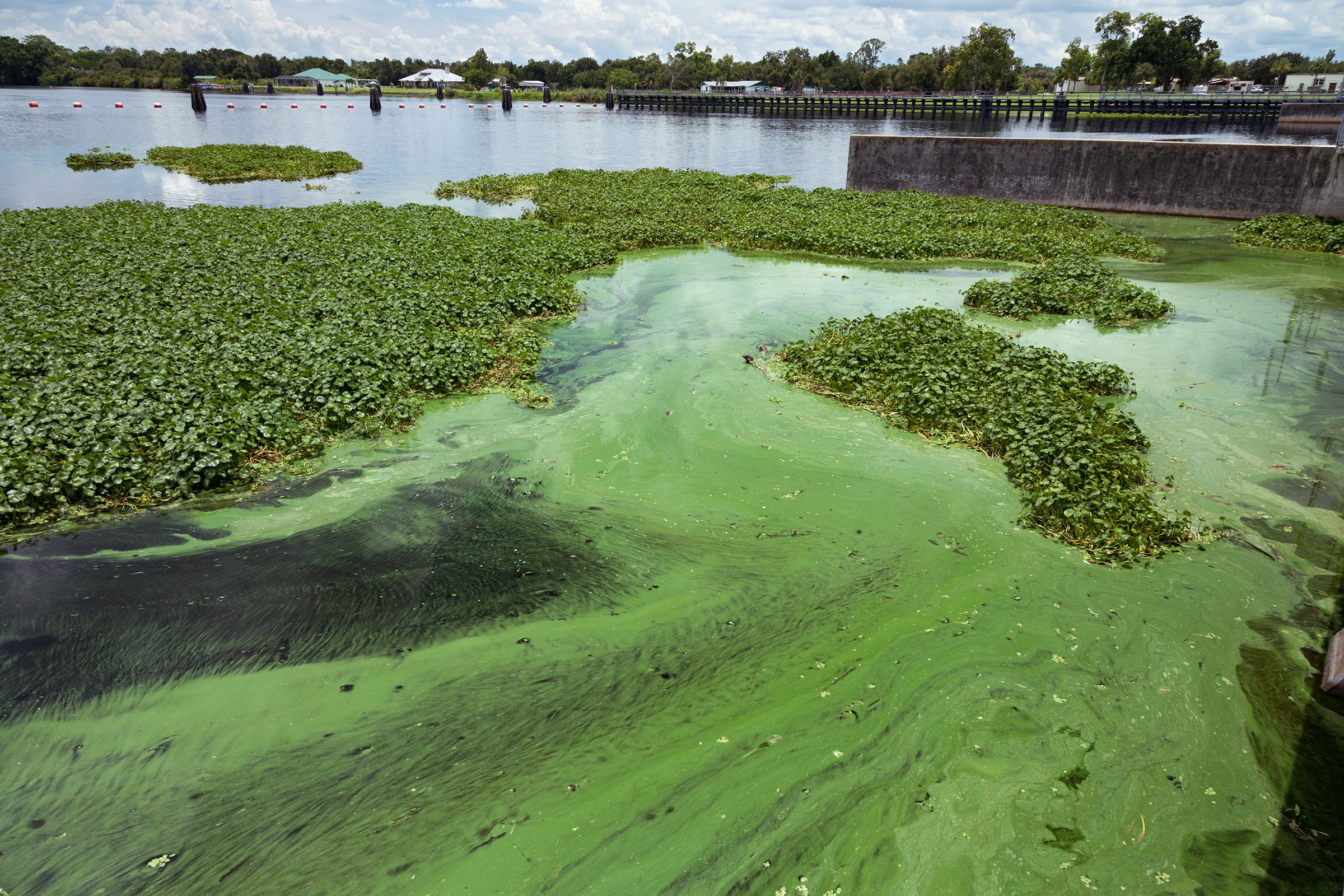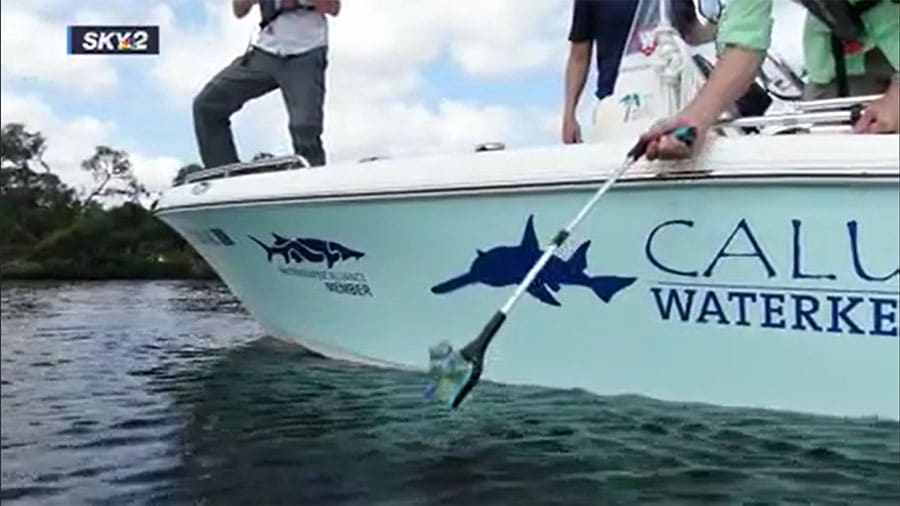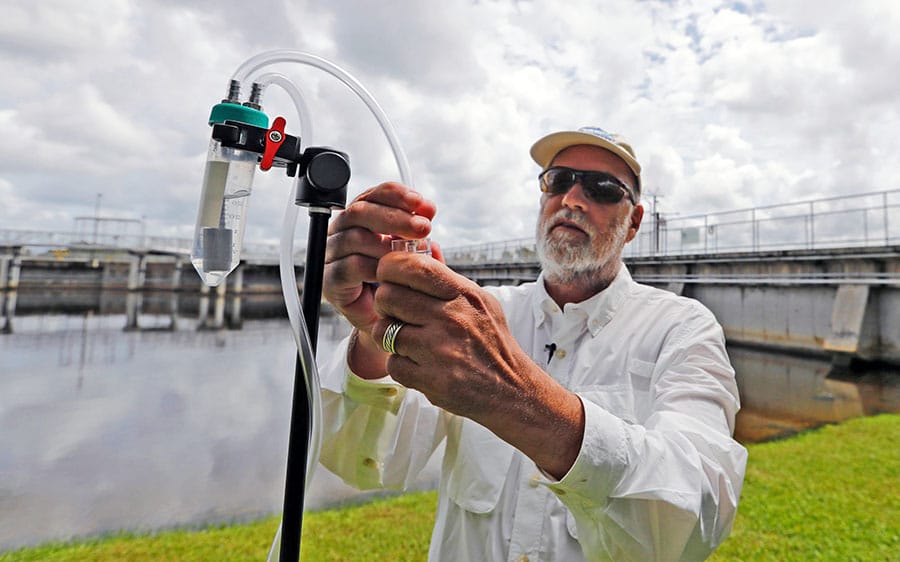Impact Programs
Water & Air Testing
About Our Monitoring Program
At Calusa Waterkeeper, we believe prioritized testing is critical to getting quick, uncompromised results and is a pathway to guiding state and local policy changes, enforcement and accountability.
Because there are a wide variety of contaminants that can impact water quality and human health, there are a plethora of parameters, toxins and indicators one could test the water and air for.
As a practical matter, our monitoring program currently focuses on two important areas:

1. Fecal Indicator Bacteria (FIB)
FIB are commonly found in the gut of humans and animals, and thus often shed in their feces. The presence of FIB is used as an indicator of pathogens and related risks from exposure to drinking supplies and recreational waters polluted by human wastewater or animal waste, which could cause gastrointestinal illness, rashes, and infections.
Water Sampling & Testing for FIB
Calusa Waterkeeper Rangers volunteer to regularly collect water samples and obtain monthly monitoring data within our work area. Our in-house lab allows us to directly process and quickly obtain values for fecal indicator bacteria from a host of local sites. The results of this regular monitoring are published on our website and social media, as well as used in our advocacy in addressing local stakeholders and state enforcement agencies.
View Recent FIB Results
2. Cyanobacteria, Cyanotoxins and BMAA
There are over a thousand different species of cyanobacteria and many have the ability to produce toxins. The most common types of cyanotoxins are Microcystin, Cylindrospermopsin, Anatoxin and Saxitoxin. These are a variety of dangerous toxins that can affect the nervous system or liver function and be lethal to animals and humans via acute exposure (such as ingestion).
Recently, a growing field of study is focusing on BMAA (beta-Methylamino-L-alanine), which is an amino acid produced by cyanobacteria. BMAA is a “slower working” toxin that has been linked to potentially terminal neurodegenerative disorders such as Alzheimer’s, ALS and Parkinson’s disease.
Calusa Waterkeeper is particularly interested in examining the potential human health risks from chronic cyanobacteria exposure in Southwest Florida and we are uniquely situated as an organization to do so.

Ad-Hoc Water Sampling

When a potentially harmful algae bloom appears, it is typical to try and first identify the dominant species. For certain cyanobacteria and dinoflagellates, we are sometimes able to identify species microscopically or ask affiliates at SCCF (Sanibel-Captiva Conservation Foundation) or FGCU (Florida Gulf Coast University) for assistance in identification.
Having an idea of what you want to test for is important, because the effort and costs for assessment of multiple toxins can add up quickly. When we deem that a test for cyanotoxins is prudent, we solicit a third-party lab for that analysis. Results are usually returned within 3 days to a week, depending on the assay, and there is a fee for determining each species or type of toxin.
Aerosolized Toxin Testing
Monitoring the air for toxins related to harmful algal blooms is essentially a brand-new field of study. After the dreadful dual states-of-emergency caused by blue green algae and red tide in Southwest Florida in 2018, several researchers became interested in performing air testing here, including some of our colleagues at Florida Gulf Coast University and Brain Chemistry Labs. Two of our original documentary series, Troubled Waters and Waterborne, explore aspects of this research.
In 2021, we designed a novel device called ADAM (Aerosol Detector for Algae Monitoring), which is used to detect aerosolized cyanotoxins. Calusa Waterkeeper volunteers with experience in the engineering and medical research fields worked closely with John Cassani to develop and build three ADAM units from scratch. These are highly portable kits designed to capture air samples over 24-hour deployments.

As conditions in our work area change, we remain open to studying other types of water quality-related contaminants. Keep in mind the multitude of parameters and frequency of testing can quickly make these efforts restrictively expensive and resource intensive.
If you have any questions on getting involved with, or financially supporting our monitoring and testing initiatives, please don’t hesitate to contact us!
Support Our Testing & Monitoring
























